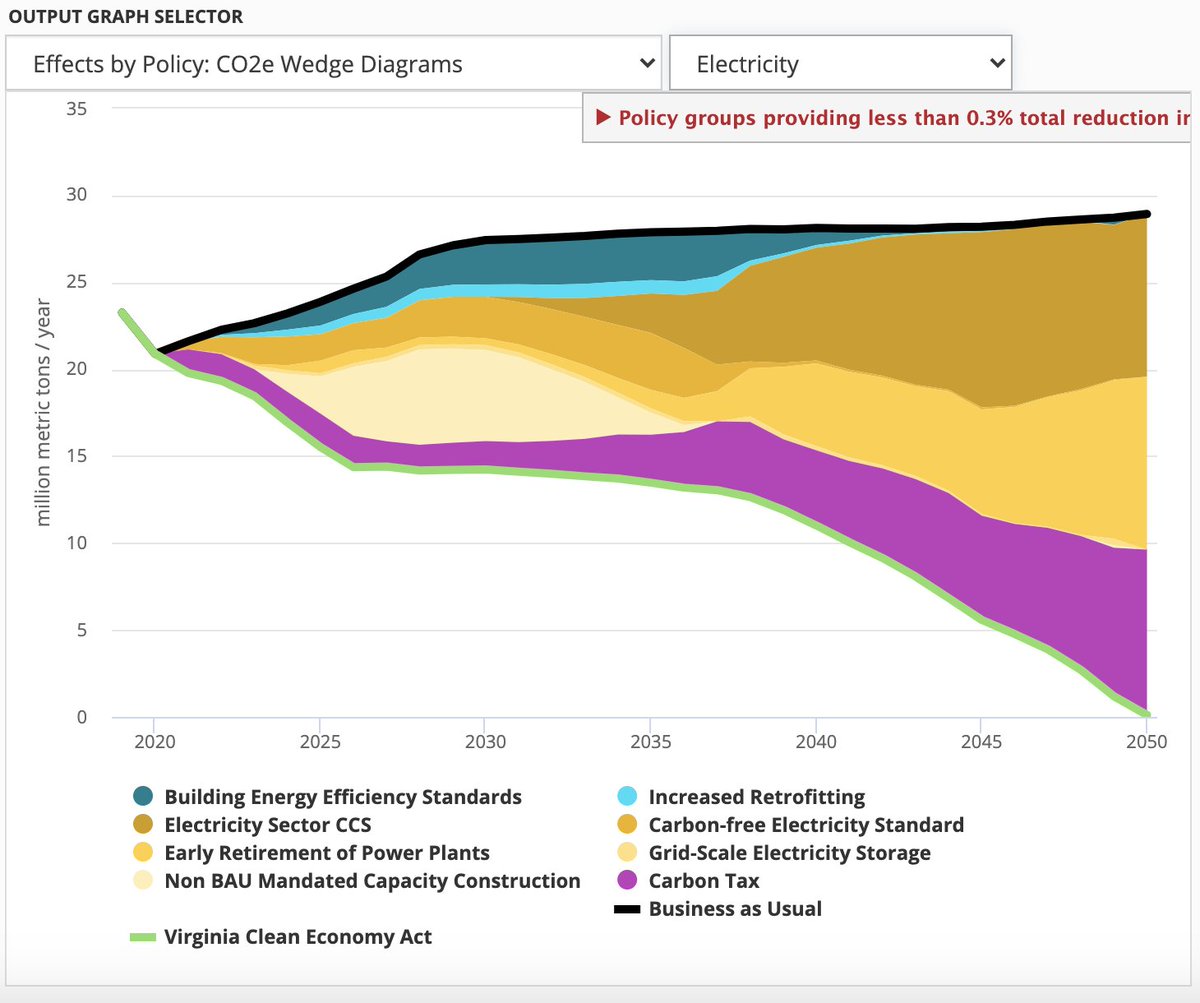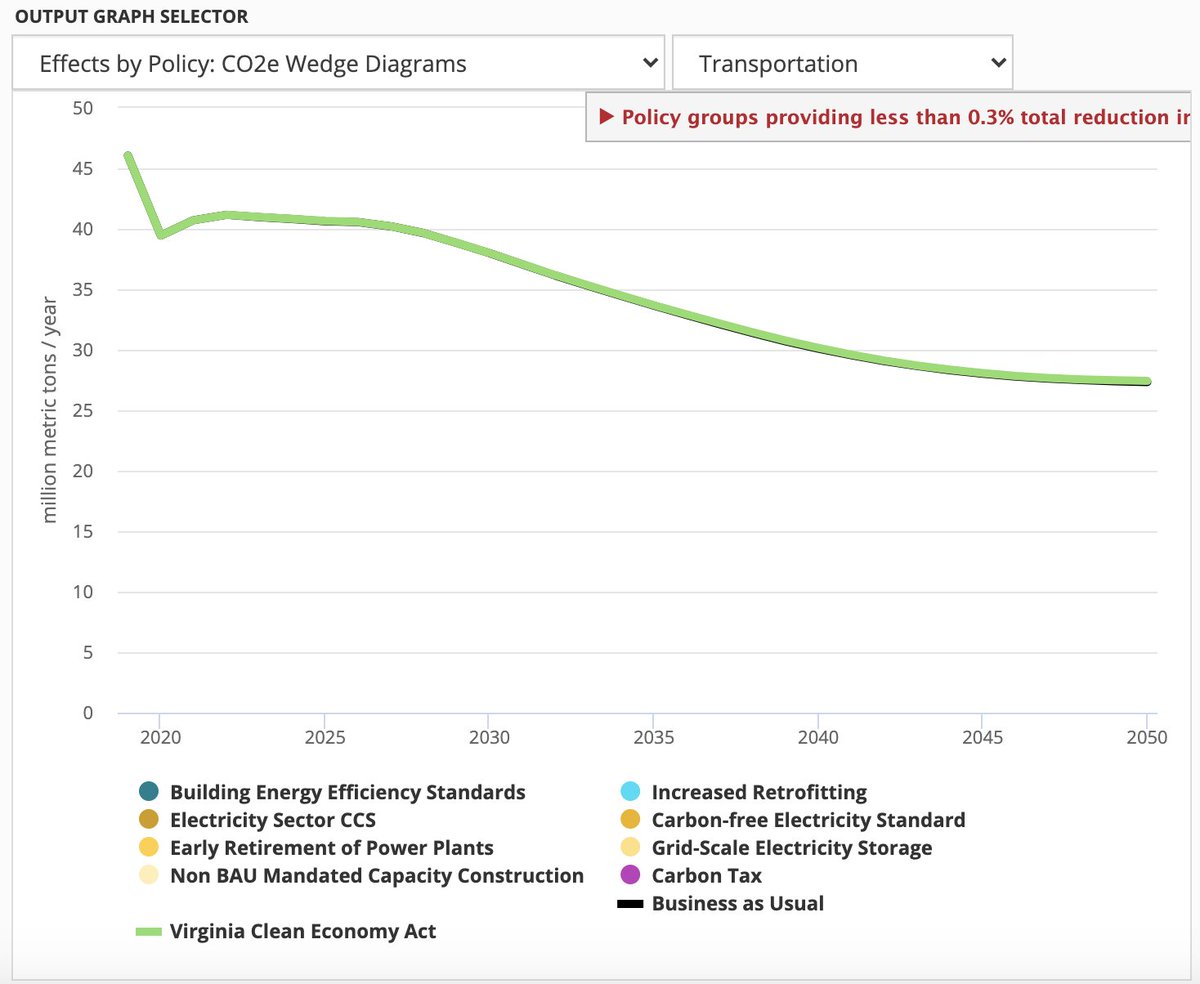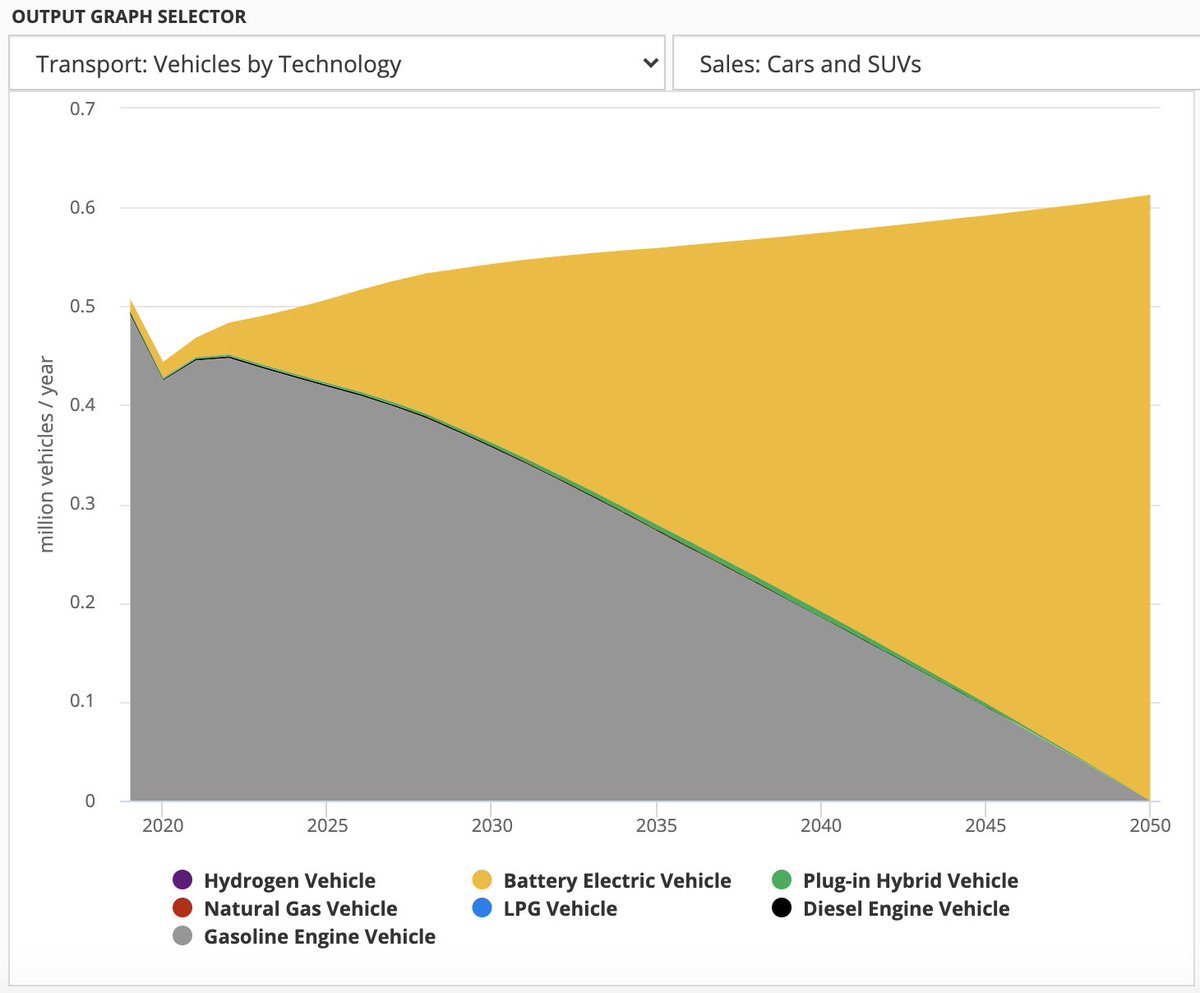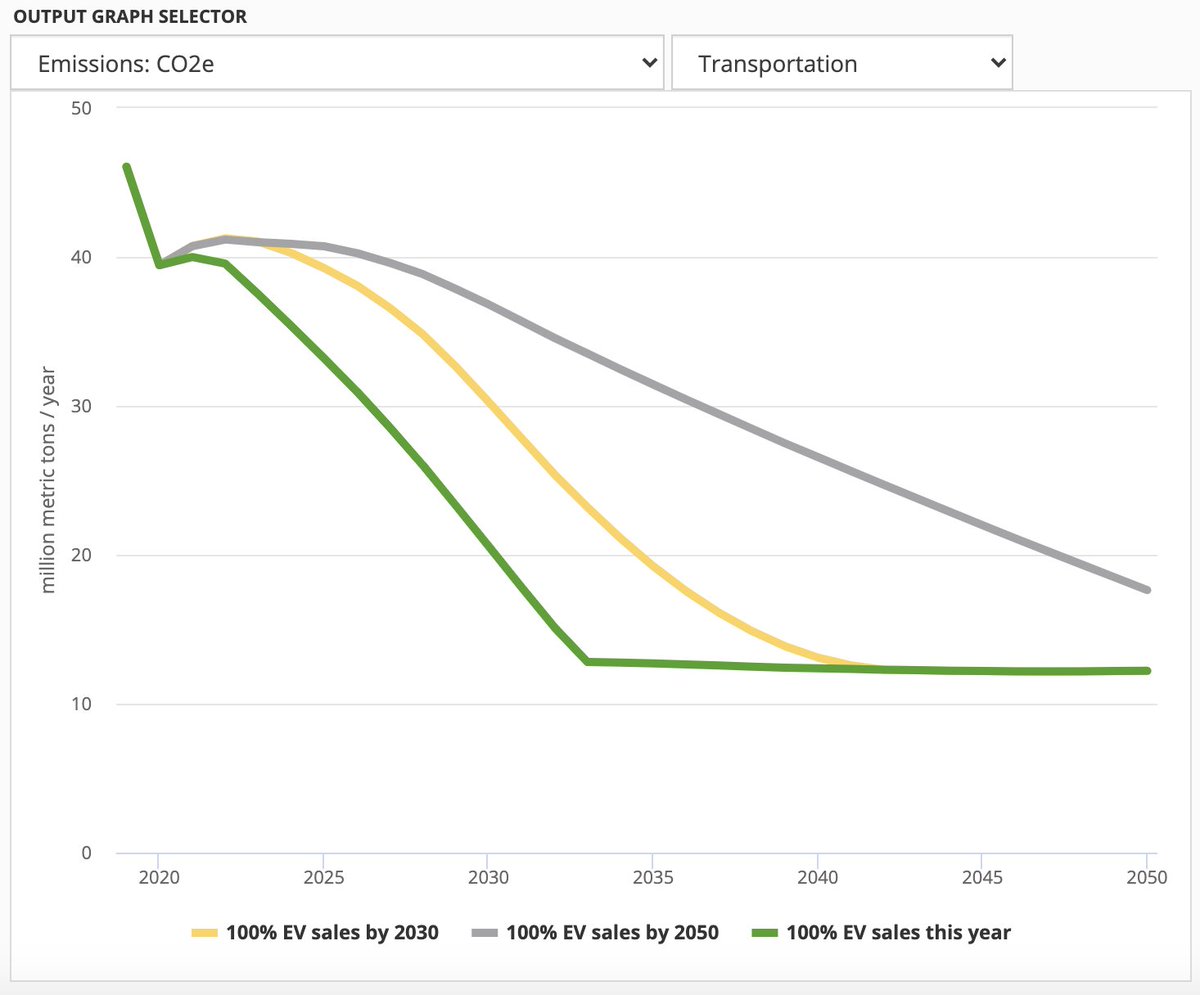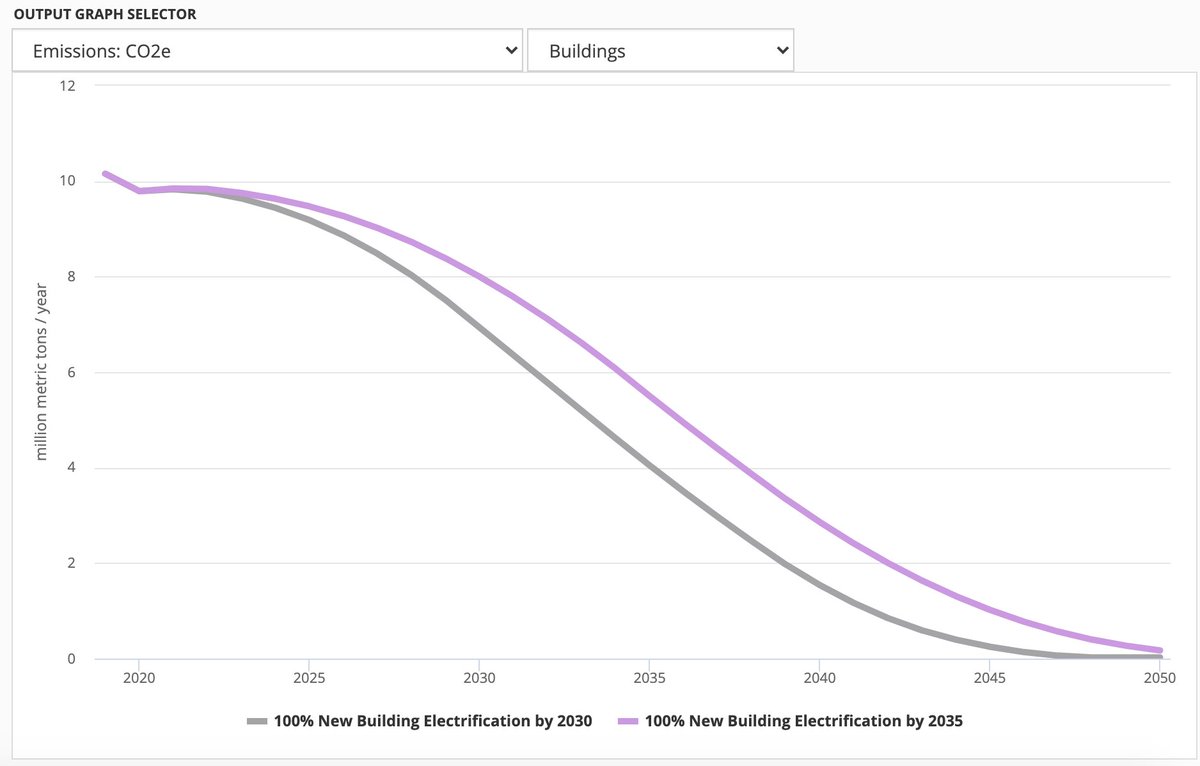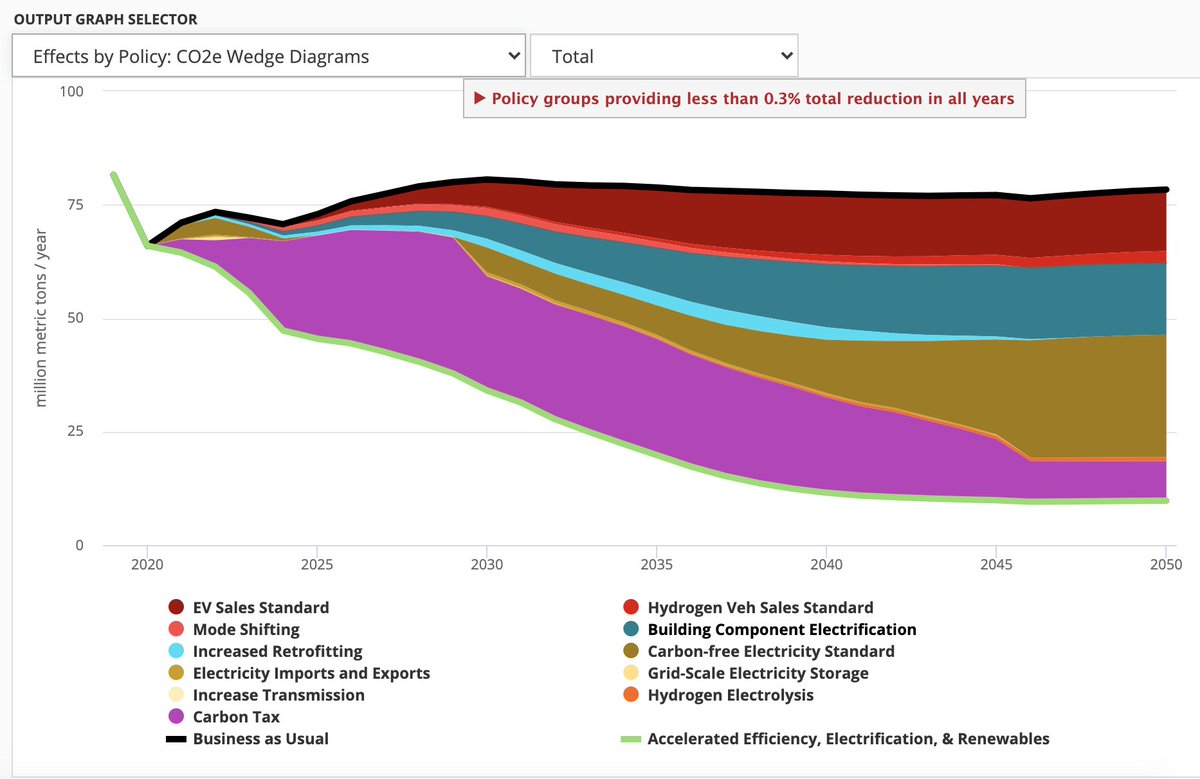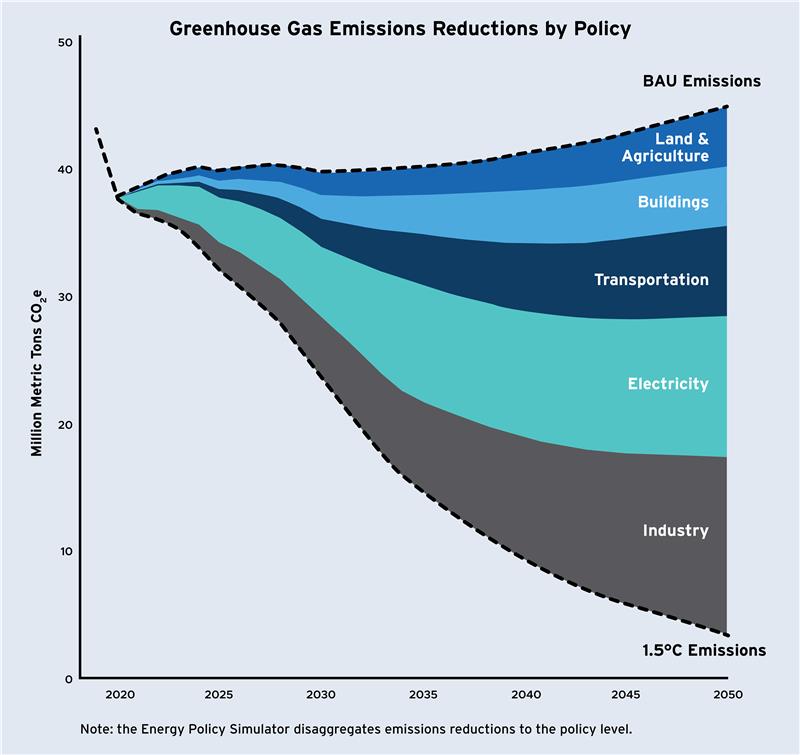RMI and Energy Innovation are working on publishing 20-48 state level energy policy simulators. Here’s why we are excited about it (a thread):
1/22 https://rmi.org/democratizing-data/">https://rmi.org/democrati...
1/22 https://rmi.org/democratizing-data/">https://rmi.org/democrati...
The energy transition is technically challenging. Pretty much every sector of the economy has substantial emissions. Cutting emissions by 10% is easy to do by shutting down coal plants. Cutting emissions by 100% necessarily touches EVERYTHING.
Energy policy also has broad effects, from GDP to employment to health (fossil fuels hurt a lot of people) to Earth warming pollution.
When designing or advocating for effective climate policy, you need to know: Where are emissions coming from now? What will policies do? Even more challenges are from previously passed policy packages that layer on top of each other like legislative lasagna.
Often advocates and policy-makers are in the dark about the emissions impacts of certain policies and the only light is a 200 page yearly report that costs 10s of thousands of dollars.
Which necessarily elevates the richest orgs to engage substantively in this conversation.
4/22
Which necessarily elevates the richest orgs to engage substantively in this conversation.
4/22
The Energy Policy simulator for states is designed to level the playing field. It pulls from hundreds of public data sources and reports into a system dynamics model. Spits out a LOT of cool stuff - 50+ policies AND 50+ graphs to play with on a webapp tool. Here’s a taste:
5/22
5/22
Gap reports! Many states have climate goals, and have passed some climate legislation. Most climate bills can be classified as “progress but not the finish line”.
We have used the EPS to calculate the emissions, $, jobs, and health impacts of all sorts of policy packages.
6/22
We have used the EPS to calculate the emissions, $, jobs, and health impacts of all sorts of policy packages.
6/22
The tool has helped advocates identify what sectors are neglected, and figure out more policies.
For example, we used the EPS to model effect of the Virginia Clean Economy Act (VCEA) on state electricity emissions:
7/22
For example, we used the EPS to model effect of the Virginia Clean Economy Act (VCEA) on state electricity emissions:
7/22
Look. At that. Virginia legislature + advocates did something awesome. RGGI, building efficiency/ retrofitting, and a clean energy standard come together to drive electricity emissions down.
But now lets look at transportation:
8/22
But now lets look at transportation:
8/22
No change huh? Maybe Virginians want to consider some transportation policies next!
Public VA tool found here: https://virginia.energypolicy.solutions/scenarios/home ">https://virginia.energypolicy.solutions/scenarios...
Public VA tool found here: https://virginia.energypolicy.solutions/scenarios/home ">https://virginia.energypolicy.solutions/scenarios...
We are also really excited about some subsector metrics. For example, the model shows EV sales. Here I’ve modeled a policy that mandates 100% EV sales by 2050:
10/22
10/22
New car sales take a while to translate into fleets. And it’s the fleet composition that “drives” emissions, not the sales. You can see a 2050 sales mandate still a million+ gas vehicles on the road in 2050!
Time matter a lot when it comes to implementing policies, pre-existing infrastructure has some inertia!
Check out the difference in transportation emissions between by changing the year in which 100% EVs (just light duty vehicles). The implementation matters a ton!
12/22
Check out the difference in transportation emissions between by changing the year in which 100% EVs (just light duty vehicles). The implementation matters a ton!
12/22
Another example, the buildings sector this time:
A 5 year delay in building electrification policy ->
25 million tons of extra cumulative emissions… in Virginia alone!!
A 5 year delay in building electrification policy ->
25 million tons of extra cumulative emissions… in Virginia alone!!
Small delays have large impacts. And it’s important to remember that world heating emissions have the massive human costs. Lives are on the line, and delay has real human costs.
13/22
13/22
Each state tool also comes with 2 sample scenarios that achieve 1.5C alignment (numbers come downscaled from US target).
14/22
14/22
The 1.5C National Scenario (designed by @EnergyInnovLLC ) and the Accelerated Efficiency, Elec, and Renewables shows two ways to hit a 2030 state target with vetted policies.
The Accelerated scenario was designed by @RockyMtnInst to prioritize beneficial electrification!
15/22
The Accelerated scenario was designed by @RockyMtnInst to prioritize beneficial electrification!
15/22
Here& #39;s what the accelerated scenario looks like:
In this scenario, a motley crew of carbon taxes, EV sales standards, clean energy, hydrogen, transmission, and building electrification join forces to create this “emission reductions rainbow.”
16/22
In this scenario, a motley crew of carbon taxes, EV sales standards, clean energy, hydrogen, transmission, and building electrification join forces to create this “emission reductions rainbow.”
16/22
Here is a clean aggregated view of the 1.5C scenario. We can& #39;t hit a 1.5C trajectory while ignoring buildings or transportation or electricity or industry. We& #39;ll need smart policy for each.
17/22
17/22
Here is a live version of the policies coming together: https://twitter.com/ElephantEating/status/1326496033472475136">https://twitter.com/ElephantE...
We know that good climate policy also helps health, GDP, jobs, and cash-flow. I double dog dare you to try a couple of your favorite policies, many bells and whistles!
Some policies are better for jobs, others for emissions, and some are the full package ;)
20/22
Some policies are better for jobs, others for emissions, and some are the full package ;)
20/22
https://rmi.org/energy-policy-simulator
Have">https://rmi.org/energy-po... questions? Need a walkthrough? Want to use the tool but don’t know where to start? Thirst for underlying assumptions?
Email USAnalysis@rmi.org
An energy nerd will answer it (probably me tbh)
21/22
Have">https://rmi.org/energy-po... questions? Need a walkthrough? Want to use the tool but don’t know where to start? Thirst for underlying assumptions?
Email USAnalysis@rmi.org
An energy nerd will answer it (probably me tbh)
21/22
My final takeaway. This tool has a lot of potential, but we are still experimenting to see where the need is greatest.
The @climateinteract team left us with some advice: the fanciest tools are only as valuable as the emission reductions they enable.
The @climateinteract team left us with some advice: the fanciest tools are only as valuable as the emission reductions they enable.

 Read on Twitter
Read on Twitter